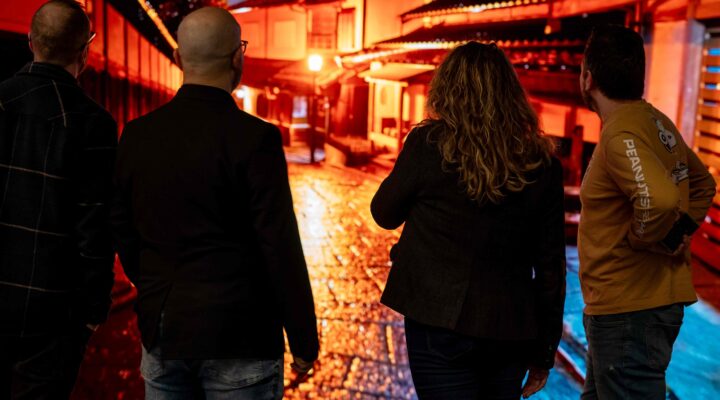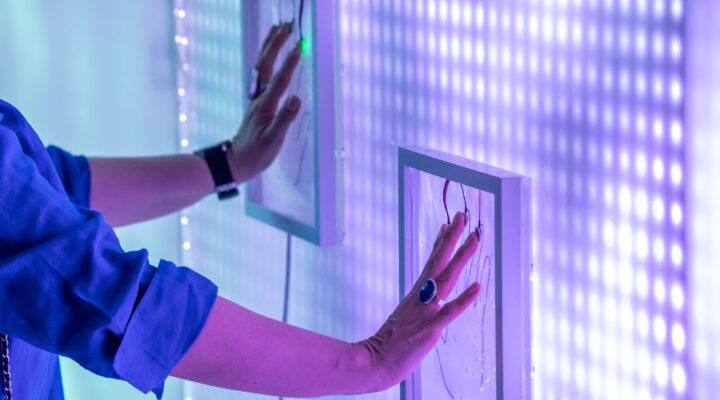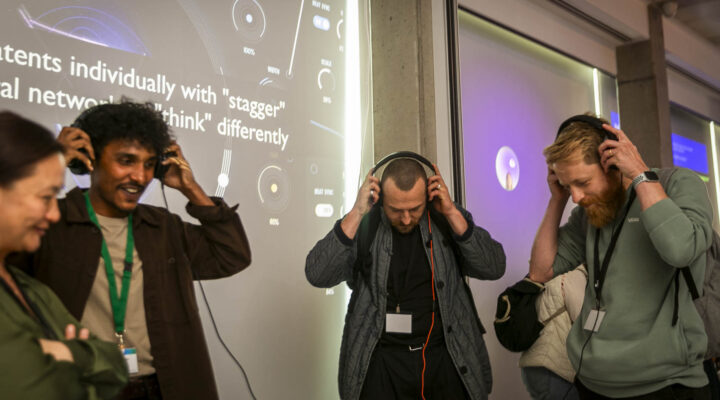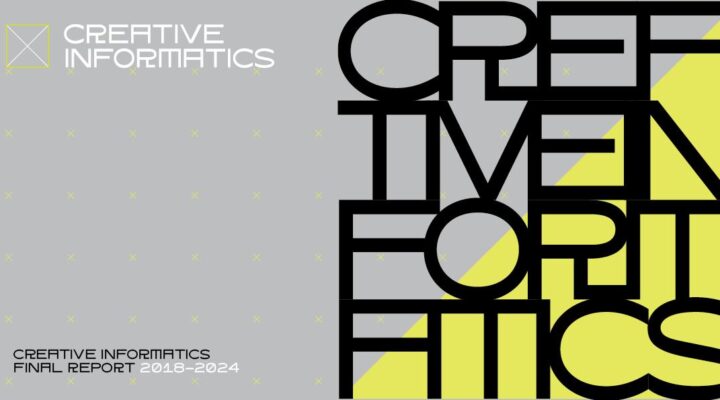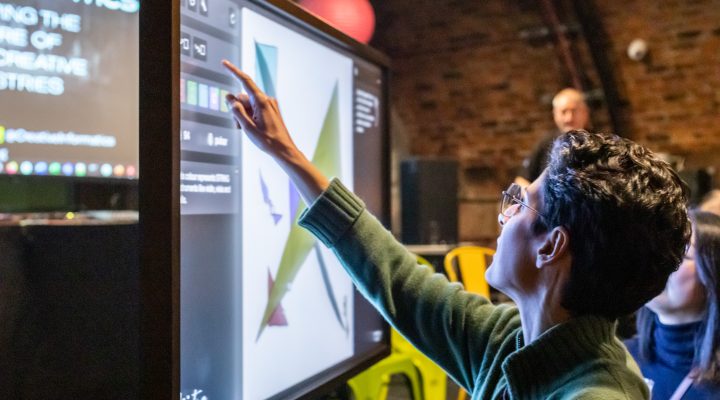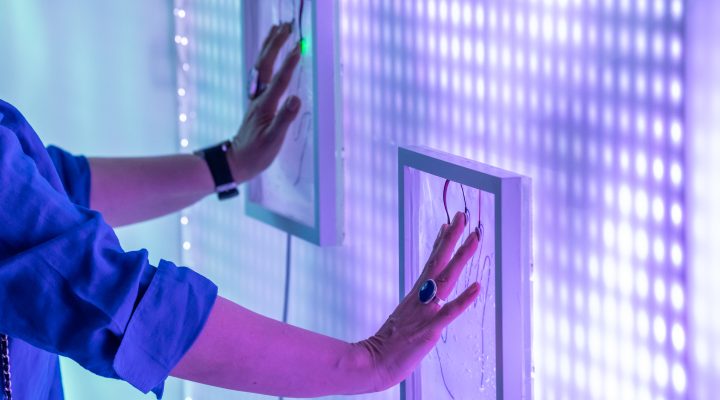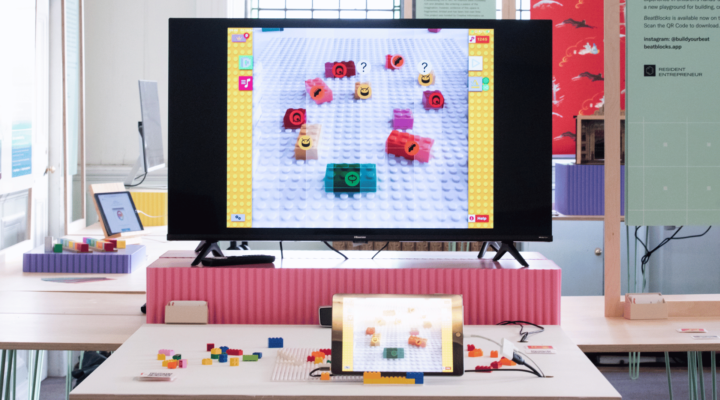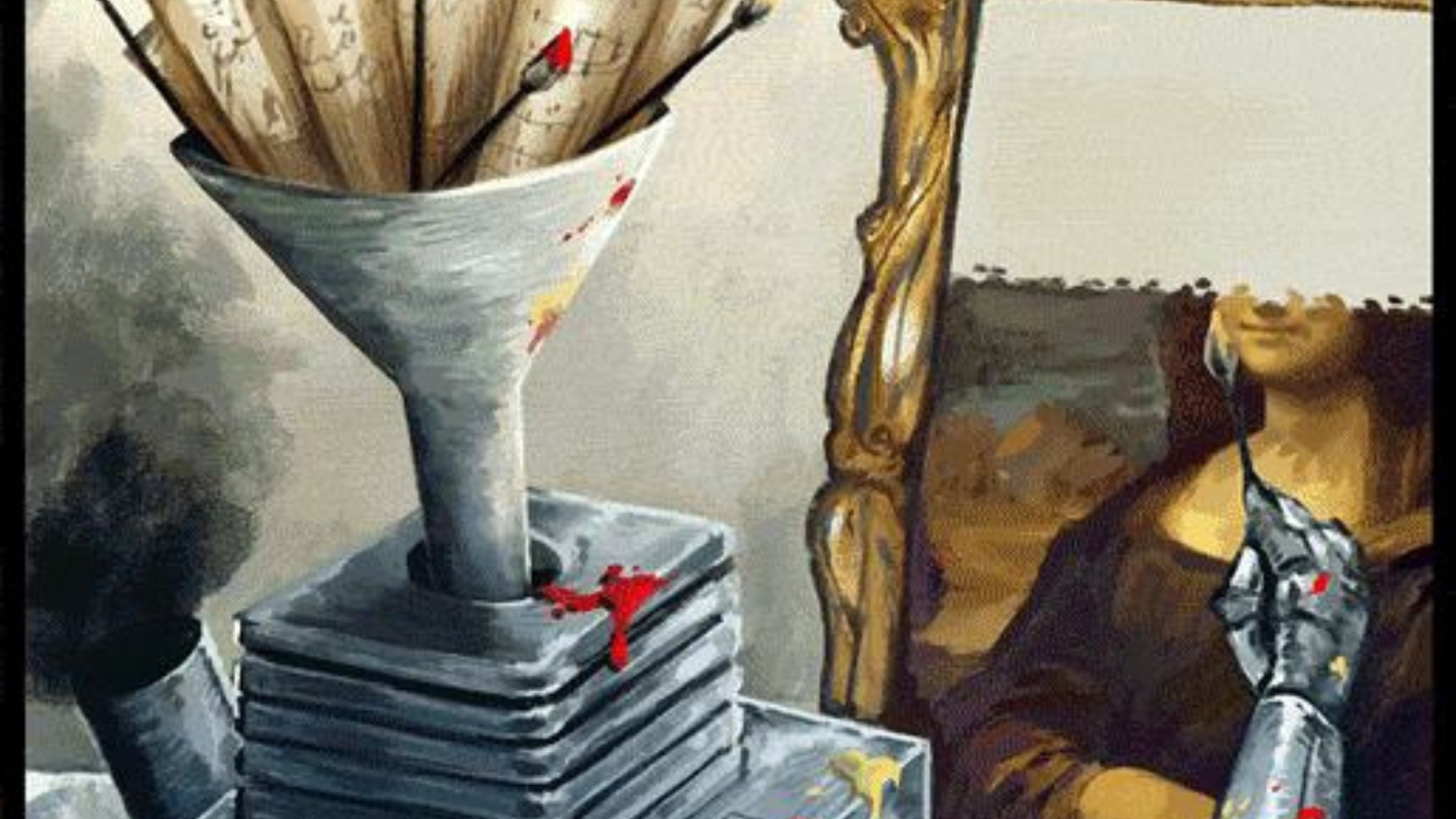
Designing a Creative Informatics Visual Vocabulary
Part of our research at Creative Informatics is to understand emerging directions for creative applications of data and technology. Another aspect of our work is to communicate our findings back to our creative community, and devise methods to support the community in thinking about how data and technology could fit into their work or practice.
Our research on cataloguing the Creative Informatics funded projects – led by myself and Chris Elsden – produced insights into a number of ways our projects are addressing core Creative Industries challenges through the use of data and technology. For example, we demonstrated how data and technology are serving as tools to enable new forms of engagement with artistic collections, create new markets for creative work, and provide assistance and support to creative practitioners (see Figure 1).
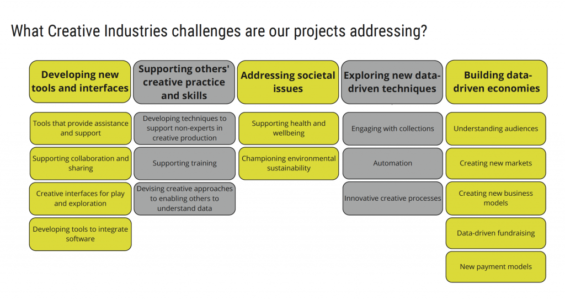
Figure 1: An analysis of the challenges that Creative Informatics funded projects are addressing, derived from our Cataloguing research.
Next, we wanted to devise a creative way to make the findings come to life, and to inspire creative practitioners to consider how their work or practice might be enriched, or challenged, through data-driven innovation. To do so, in the summer of 2021, we recruited Peter Tilley – a graduate of Illustration from the Edinburgh College of Art – to help us translate our findings into compelling illustrations.
Using the themes presented in Figure 1 as a starting point, we collaboratively ideated how they might be visually represented. Through a process of iterative sketching and discussion, we aimed to come up with images that would demonstrate compelling but abstract use cases of data and technology, that would resonate with a variety of creative industries – e.g., ranging from visual art, to publishing and music.
Through this process, we discussed how data and technology can help address each Creative Industries challenge and how this can be best represented. For example, the challenge of “supporting non-experts in creative production” led us to discuss how emerging technologies and data-driven methods for supporting creativity, including artificial intelligence and generative adversarial networks, can add new layers of sophistication and production quality to novices’ creative work. We decided to make this a key focal point of the illustration, ultimately representing the challenge by way of a printer that takes a basic drawing as input, and adds to it further dimensions and layers (see Figure 2).
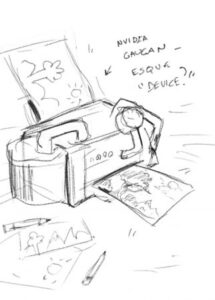
Figure 2: An early sketch for the theme of “supporting non-experts in creative production”
Peter next turned the ideas and initial sketches into illustrations of a high production quality- using often-fantastical imagery, drawing on playful steampunk and solar-punk traditions, and even animating the final illustrations to make them further come to life. Here, we present two examples of the fully rendered images. For the challenge of “supporting engagement with collections”, Peter created an image of a person stepping into a book, and stepping out holding a flower, in order to convey how technology can bring a new layer of immersion to a collection of artistic work (Figure 4).
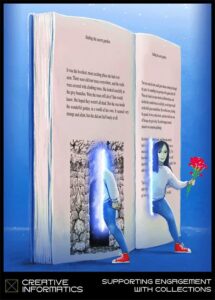
Figure 4: An illustration for the theme of “supporting engagement with collections”, visualising a person walking into a book and walking out with flowers in hand.
For the challenge of “automating processes” we settled on a robot that takes existing artwork as a data input, in order to then paint a masterpiece, “bit by bit” (see Figure 3).
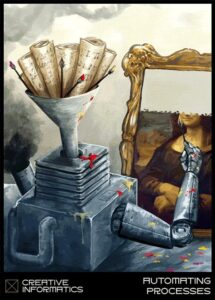
Figure 3: An illustration for the theme of “automating processes” showing a robot that takes historical art data as input and mechanically produces a painting.
His approach carries digitally painted elements from Photoshop to After Effects, where tweens and distortion are applied. These techniques draw from Peter’s background in video-game asset creation and the development pipeline commonly adopted by stylised 2D video-game assets – particularly those found in digital card games. This influence further informs the subject and form within these illustrations: where tonal aspects of fantasy trading cards are echoed. This influence, and an interest to develop contrasting imagery to previously existing tech iconography, prompted the playful and often fantastical ideas seen within the compositions.
EMBRACING CRITICALITY
While the illustrations are primarily aimed at being a source of inspiration, they are also intended as tools to question the optimism of embedding data and technology into creative practice. For example, the image of a robot painting the Mona Lisa may well make the viewer question what it means for the artistic process itself when artificial intelligence or automation takes command (whether that’s positive or negative). We view this form of criticality as something to be welcomed.
NEXT STEPS
Far from over, the project is still in full swing. The next stage is to fully render a set of 12 themes into illustrations and GIFs of a high production quality. These will then be developed into a card deck that serves as inspiration for ideating data-driven projects, and can be used for design workshops with our creative community.
